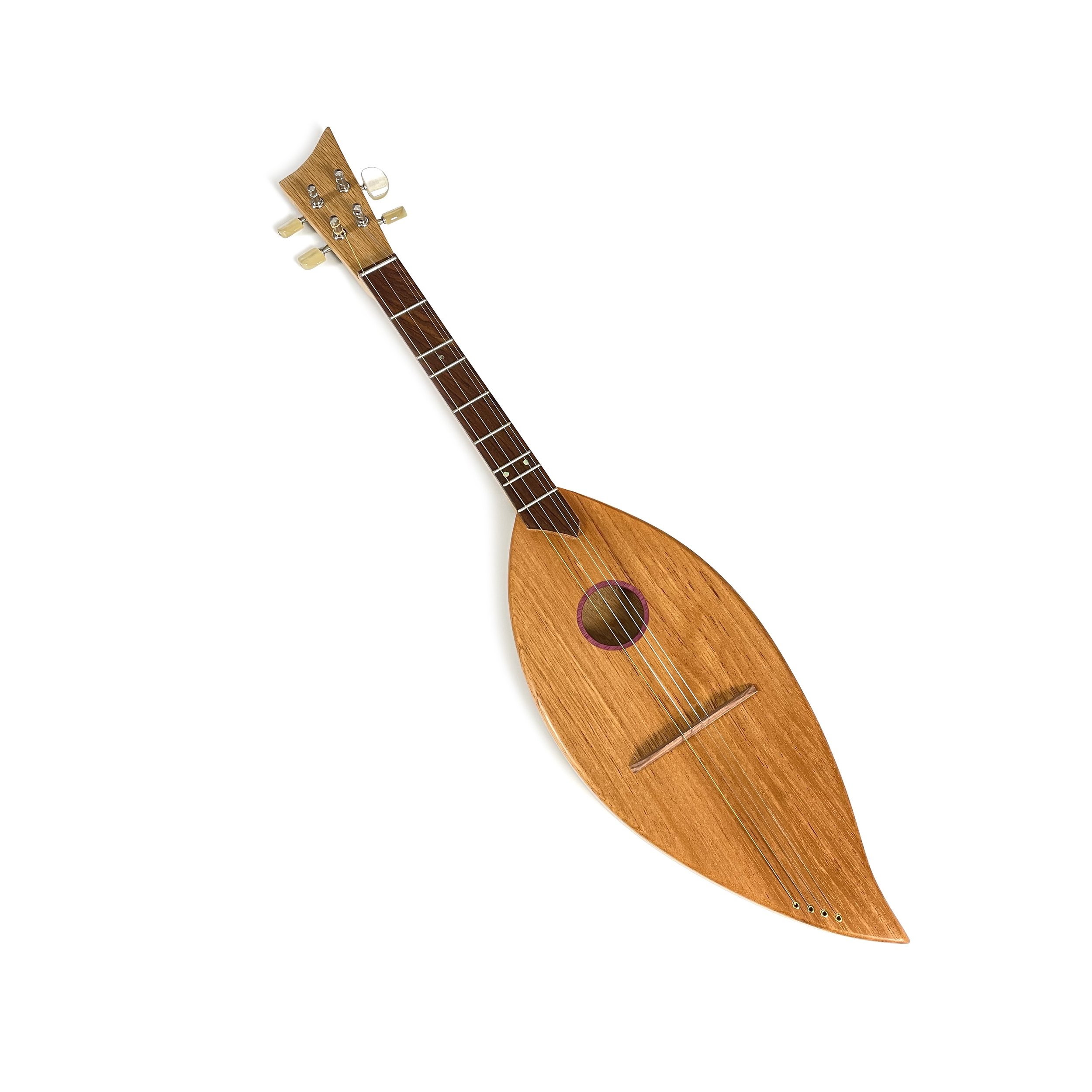
How to Play Wild Sparrow Lute Dulcimer
Basics
-
Playing is as easy as pushing a string down with one finger and strumming. Let’s get started with some basic info in the tabs below!
-
On a Wild Sparrow lute dulcimer the two strings that are close together are tuned to the same note and played as one string.
Longer models are tuned D, A, DD (D3, A3, D4)
Shorter models are tuned G, D, GG (G3, D4, G4)Instruments may be able to be tuned somewhat higher and lower within a range of 2 or so steps.
-
The lute dulcimer is pinched against the torso by the forearm of your dominate/strumming hand while your other hand holds the neck along your palm.
-
Allow your hand or pick to brush the strings firmly to create a nice balanced sound. You can angle the direction of your strum to accent the bass string or high strings.
Lute dulcimer is easy to play but rich because most the time you only have to note the double string while strumming, leaving the other two open creating a harmonious drone. The double string creates more emphasis on the melody notes.
-
The metal bars along the neck of the instrument are called frets. Place your finger down firmly on a string in between the frets to change the note that it plays. This is called fretting. The double string (two strings close together) are played as if they are one string.
How it works:
When you ‘fret’ you’re pushing a string against the fret causing the side that is vibrating from the strum to become shorter thus changing the note to a higher pitch. The best place to fret is just behind/next the fret bar (on the side closest to the head of the instrument) because it requires less force from your finger to get the string down onto the fret. Don’t push down directly on the fret because part of your finger will dampen the vibration. -
Music is usually written out in a number system called tablature. The tablature numbers correspond to frets (fret spaces). 1 is the closest fret to the headstock of the dulcimer then 2 and so on down the neck. Tablature for dulcimer may be written in one line of numbers or three, one for each string.
Most music is played along only the double high strings which are played together as if they are one string. The others are left open and strummed at the same time to create a drone.
1-Line Tablature: These numbers typically only refer to only the double string while the other two are strummed open (see paragraph above).
3-Line Tablature: Each line of numbers represents a different string set. In Wild Sparrow tablature it is set up similar for guitar with the top as the high/double string set and the bottom line as the bass string. For other mountain dulcimer music it is the opposite with the bottom line as the double string set and top line as the bottom string.
While this is not a strict rule for every song, the double string/high string usually has more notes played on it so this is a helpful way to decipher the orientation of the tablature you might be reading.
What Makes It Interesting?
A Wild Sparrow Lute Dulcimer is typically a diatonically scaled instrument. This means that it plays a in a key like a harmonica, the white or black keys of a piano, or just like the mountain/Appalachian dulcimer (its immediate relative). This type of scale is at the heart of Western music and while this might seem like an unassuming feature it is really what makes the instrument shine.
For the beginner this means that it’s difficult to play around and not sound good or improv. For a novice or seasoned musician it’s easy to pick up, understand, and have a wonderful tool that, when explored, can navigate through different modal stylings and quickly create new melodies. Past the surface you’ll find an easily navigable pentatonic blues/ rock scale, a natural minor, a Dorian minor scale for an old world or fantasy melody, and a Mediterranean Phrygian minor.

